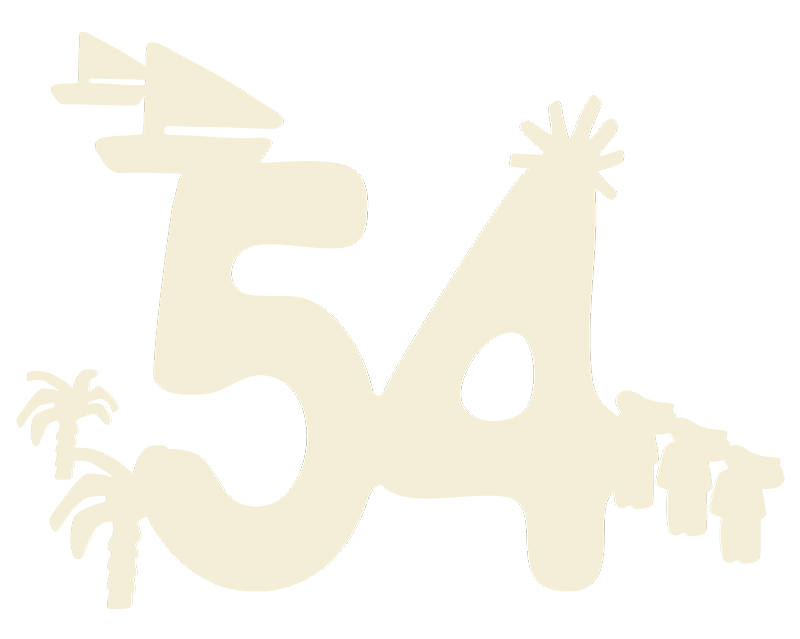

Have you ever wondered about the denominations of the UAE currency and the symbols and landmarks they feature, those that embody the nation’s spirit and rich history?
Did you know that the UAE dirham was first introduced on May 19, 1973, coinciding with the establishment of the Central Bank of the UAE?
This section has been created to share insightful information about the various denominations of the national currency and the cultural and heritage symbols they carry, representing the country’s identity and commemorating its achievements, from deep-rooted traditions to modern progress.
The older banknotes and coins serve as a mirror of the UAE’s authentic history, showcasing cultural and heritage landmarks that reflect the nation’s early development and the foundations of the Union.
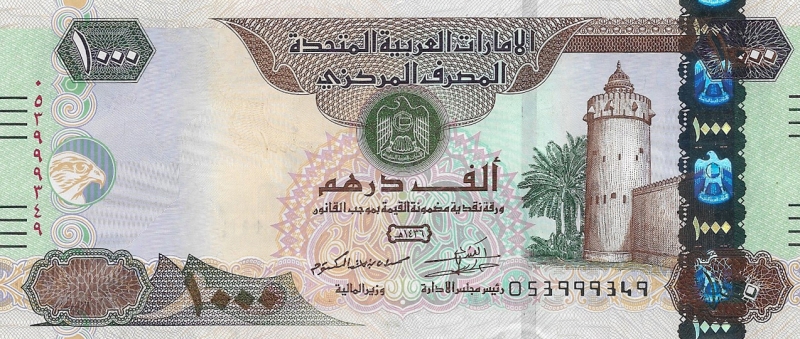
The front side of the note carries an image of Al Hosn Palace, which is considered one of the most prominent palaces in the Emirate of Abu Dhabi, while the back side carries an image of Corniche Street in the Emirate of Abu Dhabi.

In distinct shades of blue and purple, the icons on each side of the Dh500 Note represent historic elements that define the spirit of the UAE. On the front is the majestic head of a falcon, the bird at the heart of Emirati sport and national identity. It is artfully drawn in grey-brown, purple, and blue. On the back is the Jumeirah Mosque, one of the largest in Dubai. It was one of the first mosques in the country to open to non-Muslims in a gesture of tolerance and religious understanding.
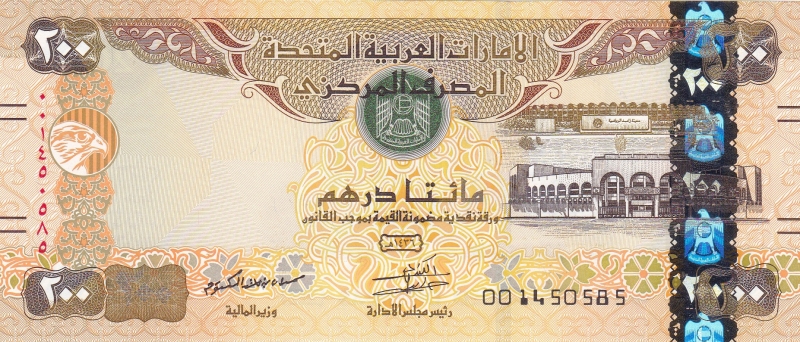
The front side of the Note carries the image of both Zayed Sports City and the Sharia Court building in Abu Dhabi. The reverse side of the two-hundred-dirham Note has an image of the main building of the Central Bank of the United Arab Emirates, located in the Emirate of Abu Dhabi.

The next UAE currency symbol on our list is the Al Fahidi Fort, found on the 100 dirhams Note. This place acted as the residence of the rulers and a fort of defense for the country over 200 years. The fort still stands in Al Fahidi Historical Neighbourhood as the Dubai Museum. Visitors to the museum can catch a glimpse of the historical artifacts and get insight into the life of people in the UAE back in the day. The reverse side of the Note has the image of the World Trade Centre area which was always the first destination for trade and business and other events.
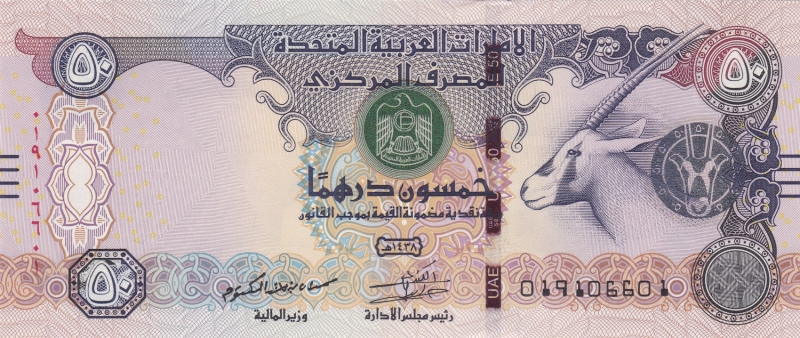
The 50 dirham Note includes an image of the head of the oryx, while the back side of the Note carries the image of the Al-Jahili Fort; located in the city of Al Ain, which was built in 1891, to defend the city and protect the palm plantations. The Oryx head is a type of desert antelope that lives in the Arabian Peninsula and parts of the African continent.
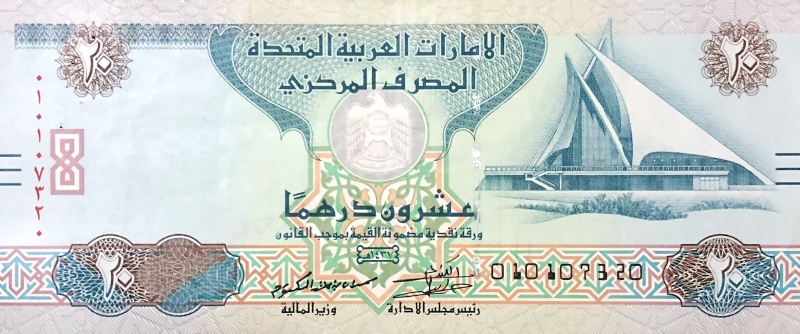
The UAE's twenty-dirham banknote includes a picture of the Dubai Creek Golf and Yacht Club on the front side, which is considered a global centre that brings together professionals and amateurs from all over the world. The back side includes a picture of a sailing boat called Sama’a, which the Emiratis used in the past to sail and make a living by fishing and pearl extraction. Therefore, to commemorate the pre-oil era, the ship was placed on the AED 20 Note.

The Dagger is a weapon used for hunting by the men. Being a symbol of power, it will forever remain an iconic symbol of the UAE’s heritage. Though the use of these has gone, it still makes itself a place as collector’s items because of its cultural importance. If you have gone through the streets of UAE, you would find this as a souvenir in beautiful cases. The back side of the Note includes an image of the palm tree, which is one of the most prominent symbols of the UAE, as it was in the past a major source of food and medicine.
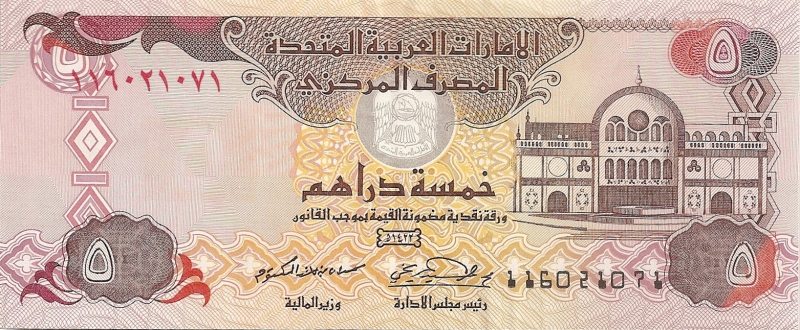
Blue Souk is also called the Central Market, known for trading and shopping. About the place, it is of rich culture with 600 shops selling almost everything. Being built with stunning architecture, it stands as one of the historical monuments in UAE and fits the best in its currency. At the back of AED 5 Banknote, you will find the Imam Salem Al Mutawa Mosque.
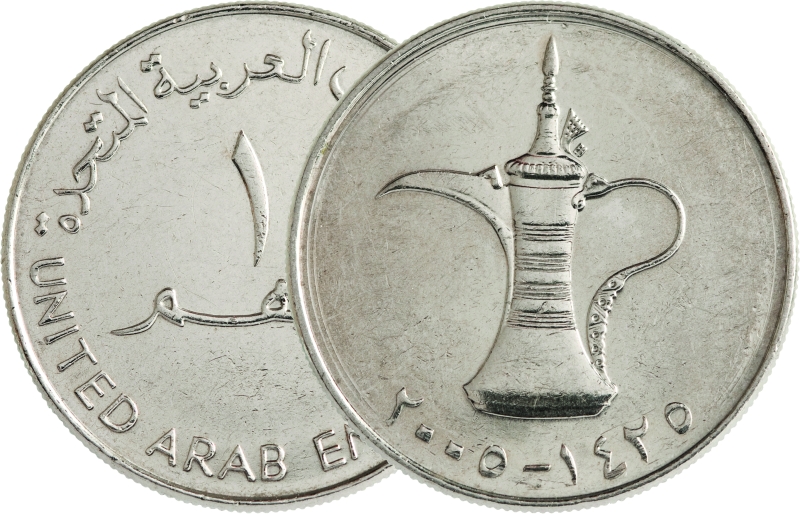
The symbol of 1 Dirham coin is the Dallah (Coffee Pot), which represents Emirati culture and the hospitality for guests. How do they welcome guests? Dating back to the earlier days, the Emirati followed a tradition of greeting the guests with a steaming pot of Arabic coffee with some dates. Arabic coffee or Qahwa is a perfect blend of Cardamom and Saffron and is still served as a welcome drink among most families.
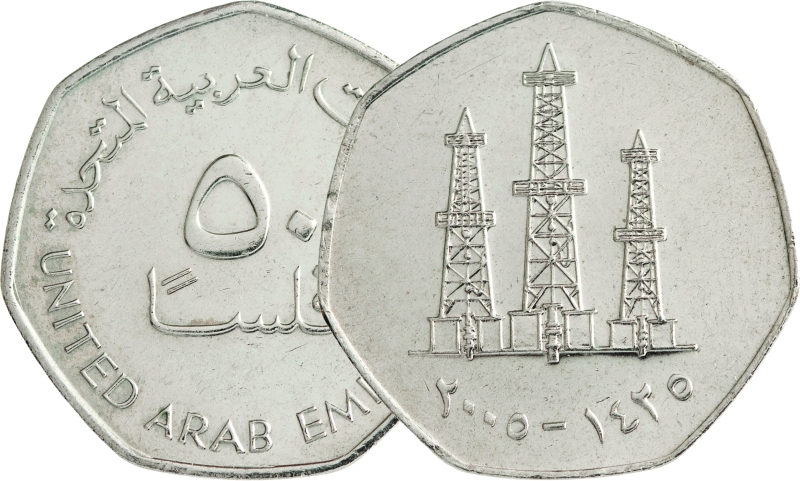
The little structures that are on the coin represent the oil derricks of the country. Earlier it was fishing and pearl diving which contributed the major part of the income. Then there came the discovery of oil in the 1950s and contributed majorly on the economy.

What you find on 25 Fils coin is a Gazelle, native animal in UAE’s deserts, especially in Abu Dhabi. These form an integral part of the wildlife in the country and existing since the rule of the late Sheikh Zayed bin Sultan Al Nahyan (may his soul rest in peace).
The new currency designs embody the UAE’s futuristic vision and pioneering spirit in the fields of innovation, science, and sustainable development, while preserving the authenticity of its national symbols and cultural values.
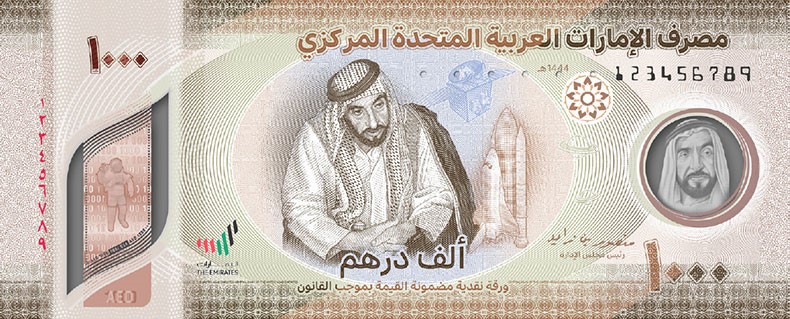
In line with the vision of the UAE’s wise leadership, the UAE's strategy and future aspirations, and as part of the UAE’s 51st celebrations, the Central Bank of the UAE (CBUAE) has launched a new banknote of AED1000 denomination, made of polymer and using innovative designs and advanced security features. The front side of the new banknote depicts the image of the late Sheikh Zayed bin Sultan Al Nahyan, next to a model of a space shuttle. This was inspired by the meeting of the late Sheikh Zayed bin Sultan Al Nahyan with the pioneers of the American space agency NASA in 1976, to express the ambitions of the founding leader to position the UAE amongst the pioneering explorers of space. The back side of the banknote carries the image of the Barakah Nuclear Energy Plant in the Emirate of Abu Dhabi.
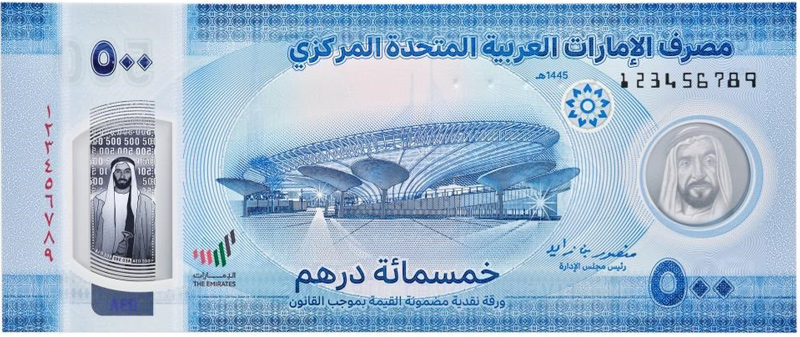
In line with the vision of the wise leadership and embodying the UAE’s global leadership role in climate action and a sustainable future, and coinciding with the country’s celebrations of the 52nd National Day, the Central Bank of the UAE (CBUAE) issued the AED 500 banknote made of polymer, with distinctive designs and advanced security features. The front side includes an image of the bold architecture of the Terra Sustainability Pavilion in Expo City Dubai, the reverse side highlights the Museum of the Future in Dubai, bridging the past with the future as an architectural and engineering marvel. Also prominent on the reverse side of the polymer banknote is an image of iconic landmarks, namely Emirates Towers, and the Burj Khalifa on the right side.
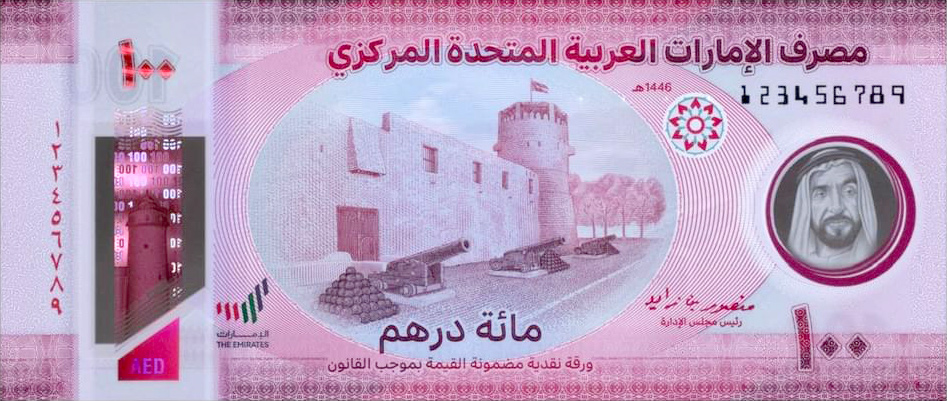
In March 2025, the Central Bank of the United Arab Emirates (CBUAE) issued an AED 100 polymer banknote featuring innovative designs and advanced security features, in line with the wise leadership’s vision to highlight the UAE’s pioneering role in the field of sustainability. This issuance comes as part of the third project of the national currency issuance, with a design that tells the story of the UAE’s success through cultural and developmental symbols reflecting the country’s journey of progress and its position as a global commercial and economic hub.
The front side of the banknote features an image of the Umm Al Quwain National Fort, a historical and cultural landmark, while the reverse side depicts the Port of Fujairah and Etihad Rail, symbolising the nation’s infrastructural development and sustainable economic growth. The new banknote incorporates state-of-the-art security features, including SPARK Flow® DIMENSIONS and KINEGRAM COLORS® technologies, in addition to Braille symbols to assist the visually impaired in identifying the denomination by touch.

The UAE introduced a new 50 dirham Note on its 50th anniversary. The front of the banknote features the memorial portrait of UAE’s founding fathers after signing the union document.
The reverse side of the Note has a picture of the late Sheikh Zayed bin Sultan Al Nahyan signing the union document and an image of the Etihad Museum.
The Note also has a picture of Wahat Al Karama —the war memorial — on both sides as a tribute to the soldiers and Emiratis who gave their lives in service to the country.

The new 10-dirham banknote features Sheikh Zayed Grand Mosque, which is considered as one of the religious, national and cultural landmarks in the UAE and mainly Abu Dhabi on the front. The awe-inspiring symbol of Sharjah’s Khorfakkan Amphitheatre graces the back of the Note.
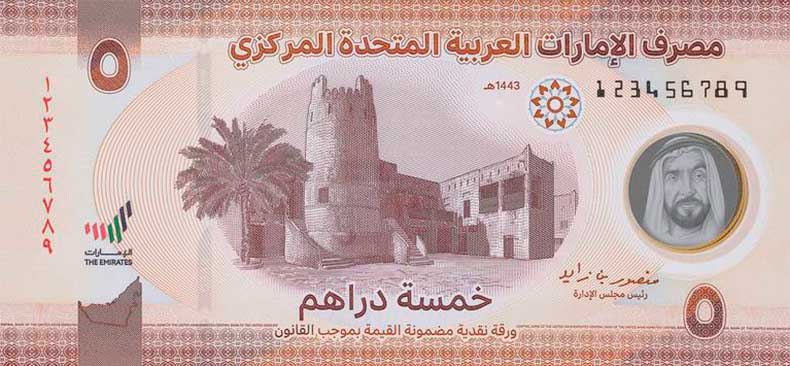
The UAE introduced a new 5-dirham Note last year with the same colour scheme as the older one. The Note’s design depicts the Ajman Fort (which has now turned into the Ajman Museum) on the front side. On the rear of the Note is an image of Ras Al Khaimah’s highest hilltop fort – the iconic Dhayah Fort. The older 5-dirham Note remains in circulation, proudly displaying the Sharjah Blue Souk as a major historic hub for trade and shopping in the emirate.